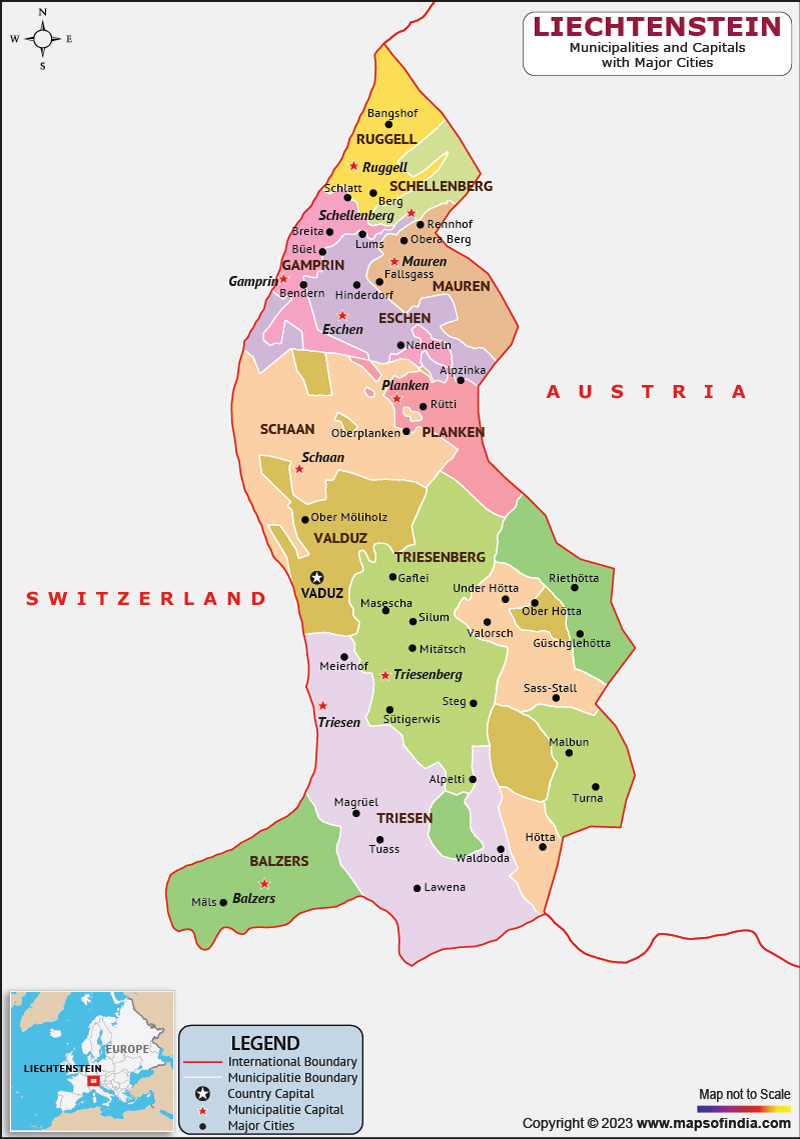Liechtenstein is a tiny, landlocked nation situated in central Europe, bordered by Switzerland to the western front and southern front and Austria to the eastern front. Despite its small size, Liechtenstein is known for its high standard of living, picturesque landscapes, and vibrant cultural scene.
History
The history of Liechtenstein dates back to the 17th century when the region was ruled by the Habsburgs. In 1719, Liechtenstein was purchased by the Liechtenstein family, who eventually established the country as a principality. Over the years, Liechtenstein has maintained its independence, even during World War II, when it remained neutral. Today, Liechtenstein is a constitutional monarchy, with a democratic government.
Culture
Liechtenstein has a rich cultural heritage, influenced by both its Austrian and Swiss neighbors. The country's traditional folk music, known as "Triesner Schrammelmusik," is popular, with many festivals and concerts held throughout the year. Traditional costumes are also an important part of Liechtenstein's cultural heritage, with many residents donning traditional attire during festivals and celebrations.
Art is another important aspect of Liechtenstein's culture, with numerous museums and galleries showcasing the works of local and international artists. The country's most famous art collection is housed in the Liechtenstein Museum in Vienna, Austria, which contains works by famous artists such as Rubens, Rembrandt, and van Dyck.
Food is an important part of Liechtenstein's culture, with traditional dishes including käsknöpfle (a type of pasta), capuns (a dish made with chard leaves), and riebel (a type of porridge). Liechtenstein is also known for its wine, with vineyards located in the Rhine Valley producing high-quality wines.
Language
The majority language of the nation is German, which is spoken by the majority of the population. However, many residents also speak Swiss German, which has a different dialect than standard German.
Geography
Liechtenstein is a small, mountainous country with an area of just 160 square kilometers. The country is located in the Alps, with the highest peak, Grauspitz, reaching 2,599 meters above sea level. The Rhine River flows through the western part of the country, forming a natural border with Switzerland.
| Official Name | Principality of Liechtenstein |
| Capital | Vaduz |
| Population | 38387 |
| Area | 160 km2 |
| Currency | Swiss Franc |
| Religion | Christianity |
| Language | German |
| Major Cities | Balzers, Triesen, Vaduz |
FAQs
Q1: Is Liechtenstein part of the European Union?
No, it is not a member nation of the European Union. However, it is a member of the European Free Trade Association (EFTA) and has a customs union with Switzerland.
Q2: What is the capital of Liechtenstein?
The capital of Liechtenstein is Vaduz, which is also the country's largest city. Located on the Rhine River, Vaduz is known for its medieval castle, which serves as the official residence of the prince of Liechtenstein.
Q3: What is the currency used in Liechtenstein?
Swiss franc.
Q4: What are some popular tourist attractions in Liechtenstein?
Liechtenstein has a variety of tourist attractions to explore, including the Vaduz Castle, the Liechtenstein National Museum, the Gutenberg Castle, and the Malbun ski resort. The country also has a number of hiking and biking trails, offering visitors the opportunity to explore its stunning natural beauty.
Last Updated on: April 28, 2023
